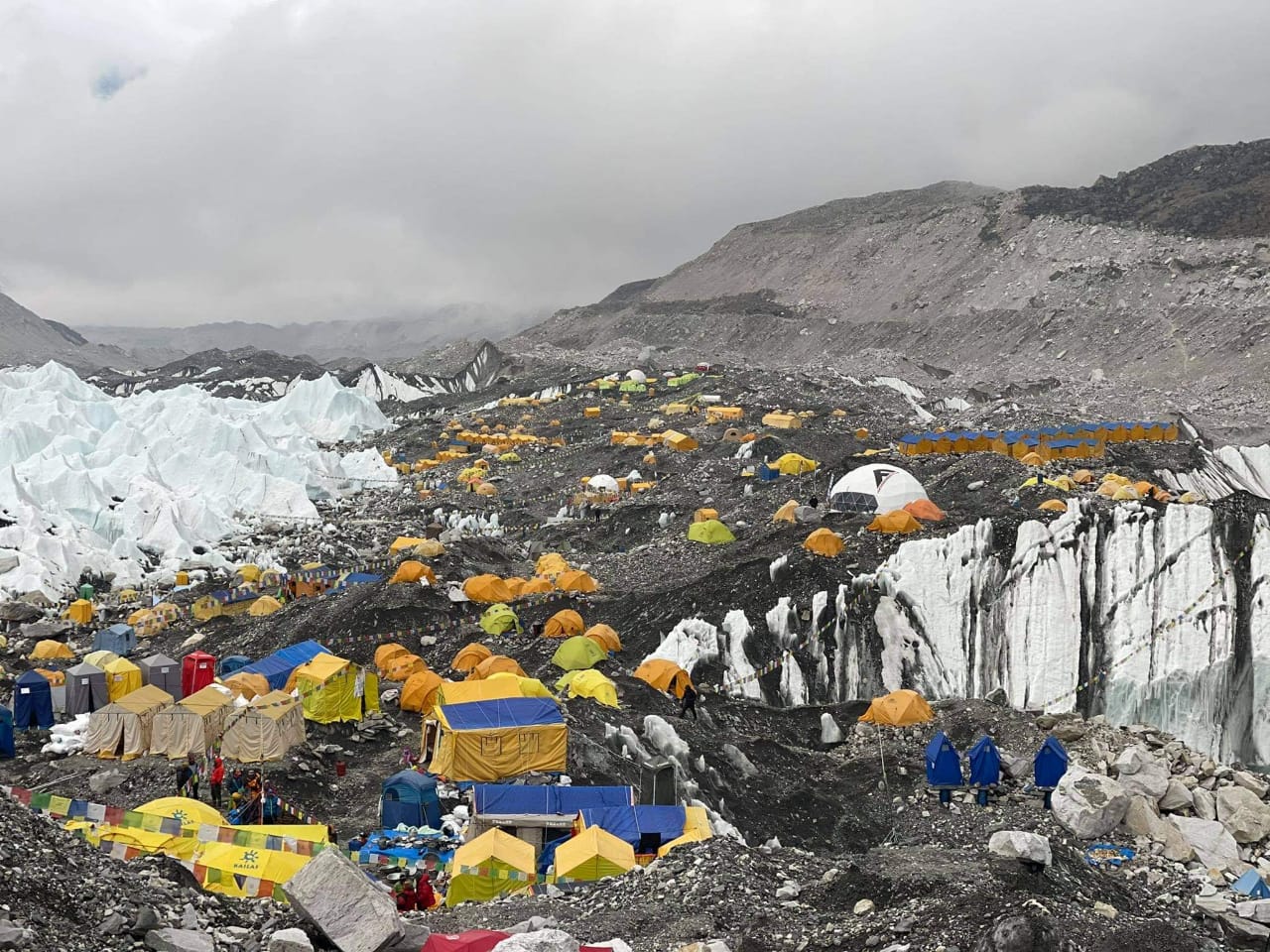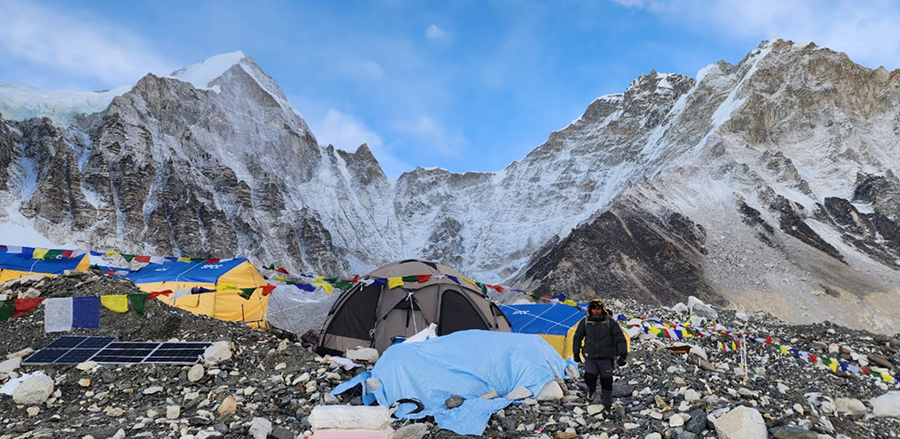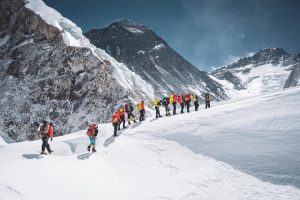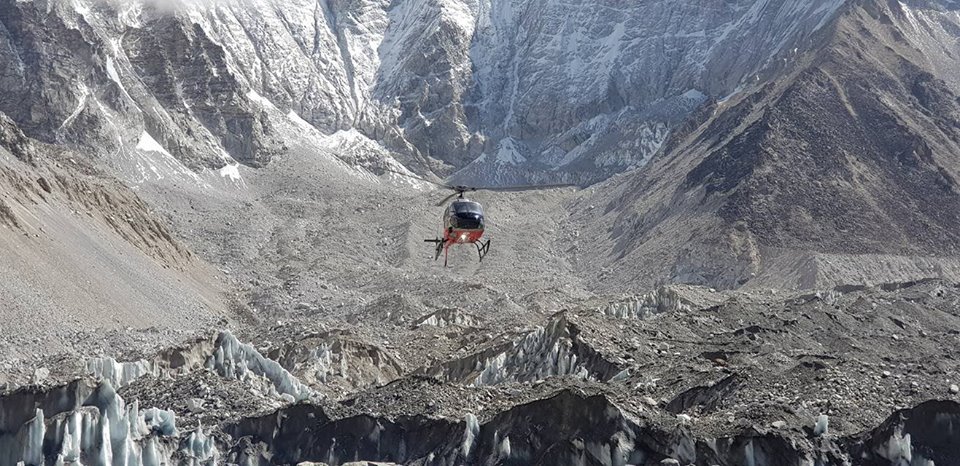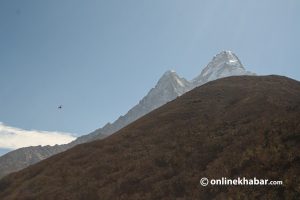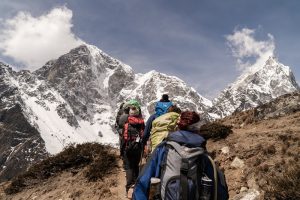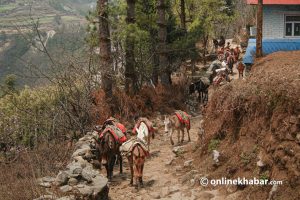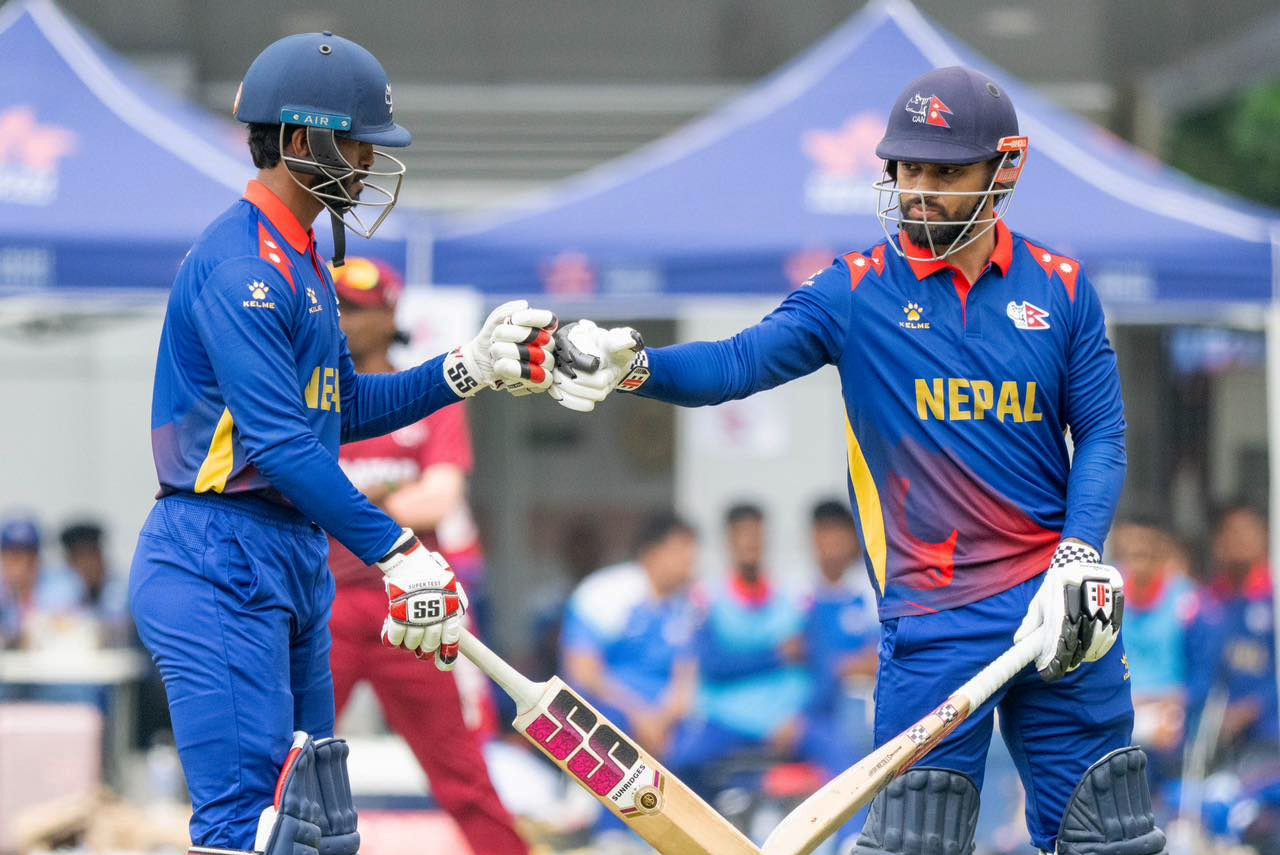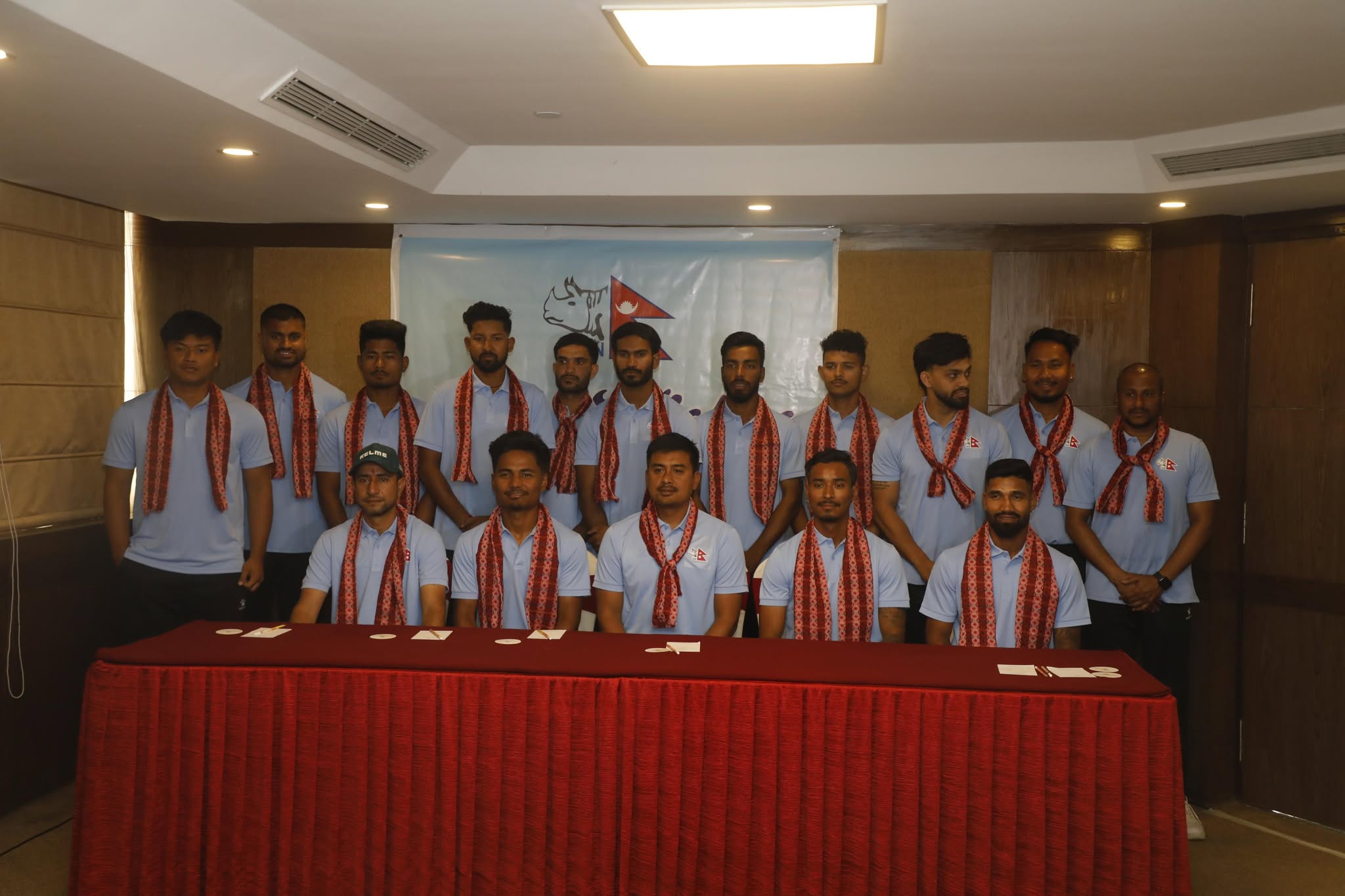Drinking tea at a kitchen tent at Everest base camp, I could only think how lucky I was. Having walked over 50 kilometres in seven days, I had reached the base camp in perfect shape. I was not tired, nor had I shown any symptoms of mountain sickness. With a cup of tea in my hand and the Khumbu icefall in front, I was breathless. It was not because of a lack of oxygen. It was because I had made it to the foot of Everest all by myself. People had told me not to do this alone, but I listened to none even as Covid-19 was raging in India.
I went on, climbed on slowly but steadily. After two years of planning and cancellation and planning, I was at a place where everyone dreams of coming. The gateway to the top of the world, the foot of the highest peak in the world, Everest, perhaps when the deadly coronavirus was also climbing up beside me.
*Disclaimer: The trek started on April 8 and ended on April 19.
The base camp trek
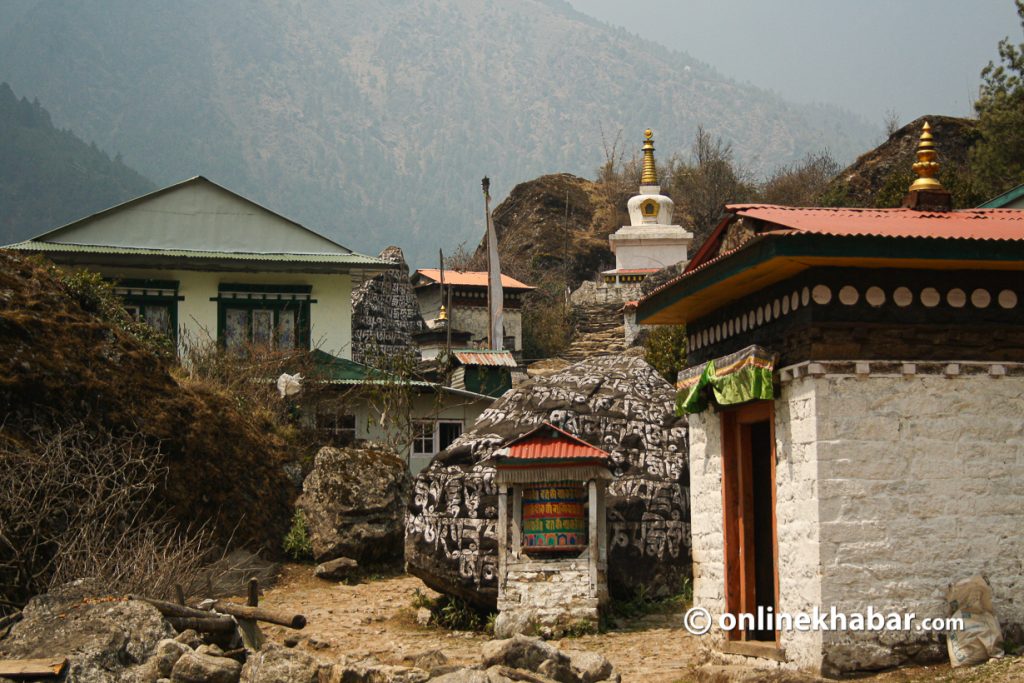
I was walking the most popular trekking trail in the world. The trail stretches around 100 kilometres if you take detours around the region. It starts at Lukla at 2,800 metres and climbs up to 5,500 metres at Kala Patthar where you get to see not only Everest but the Khumbu glacier and Mount Pumori. The base camp itself is at 5,364 metres, at the glacier itself.
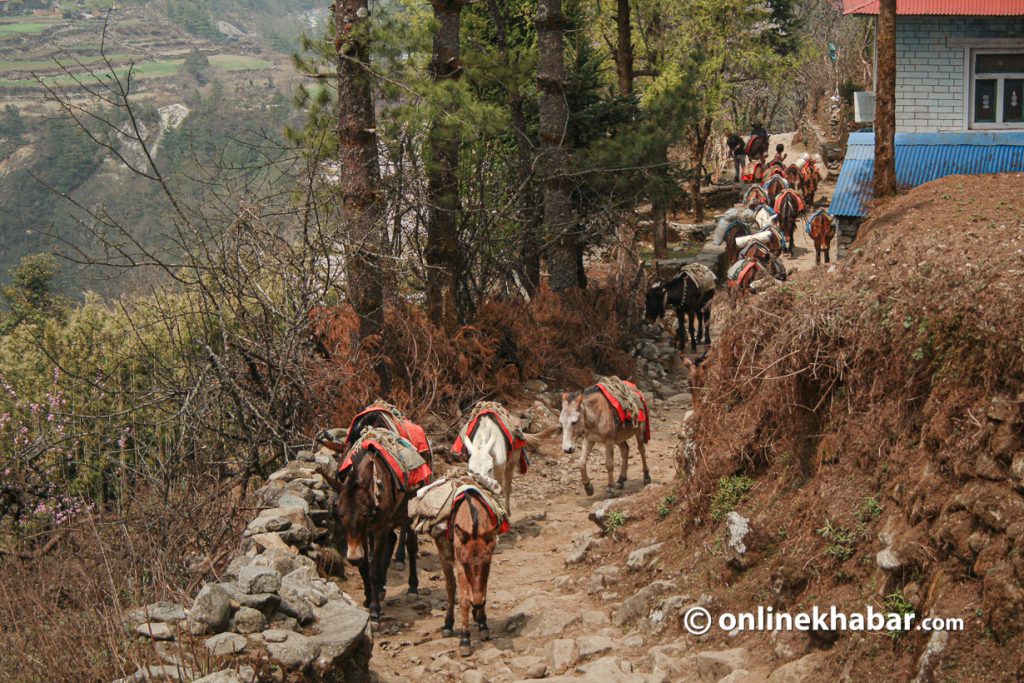
Going back in time
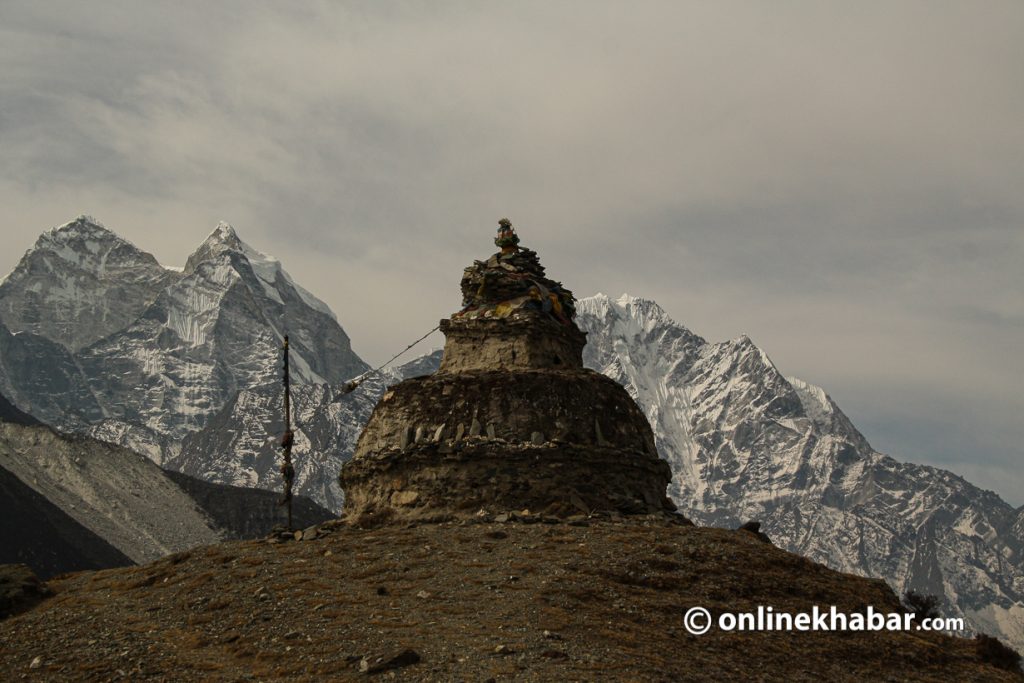
The trek, as you go higher up, is bound to take you back in terms of time. Away from all distractions, you enter a different world. You find instances that show you how the lifestyle of the people around the high mountains have not changed even though times have. Like their ancestors, the people high up, where there are not trees, use yak dung to light up the fire. It is like going back centuries where everything was made by hands.
The trail
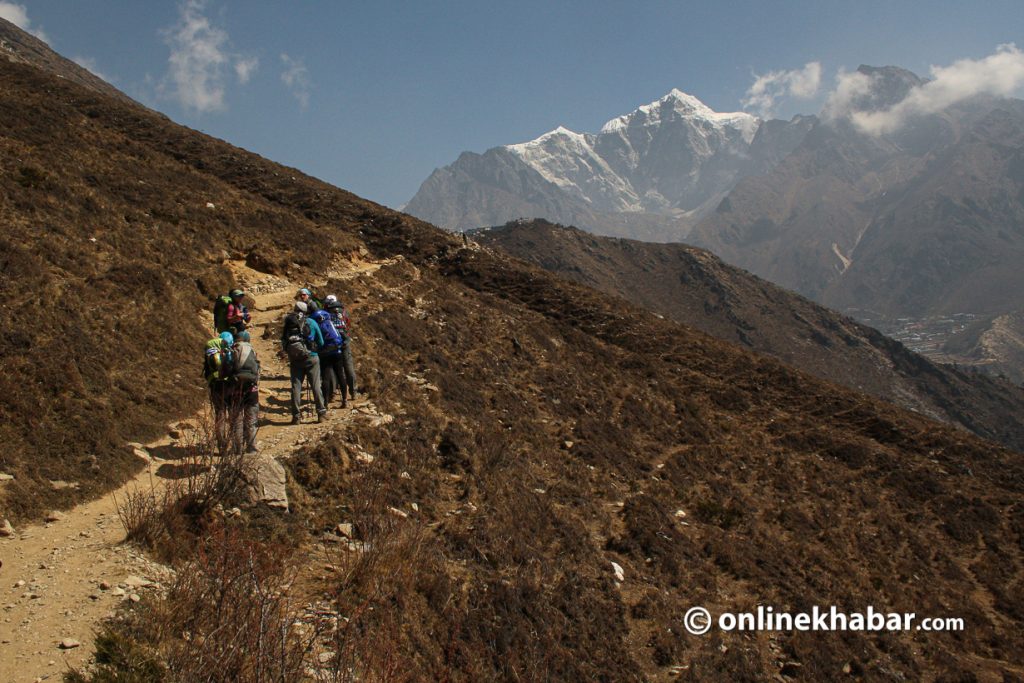
The trails are lovely. They are clean and wide enough. Given there are over 500 people trekking in the region every day during the peak season, the trails have been well maintained. The initial part of the trail is nice and easy as you walk along the base of hills listening to the gorging sound of the Dudhkoshi river. You cross sturdy suspension bridges over the river.
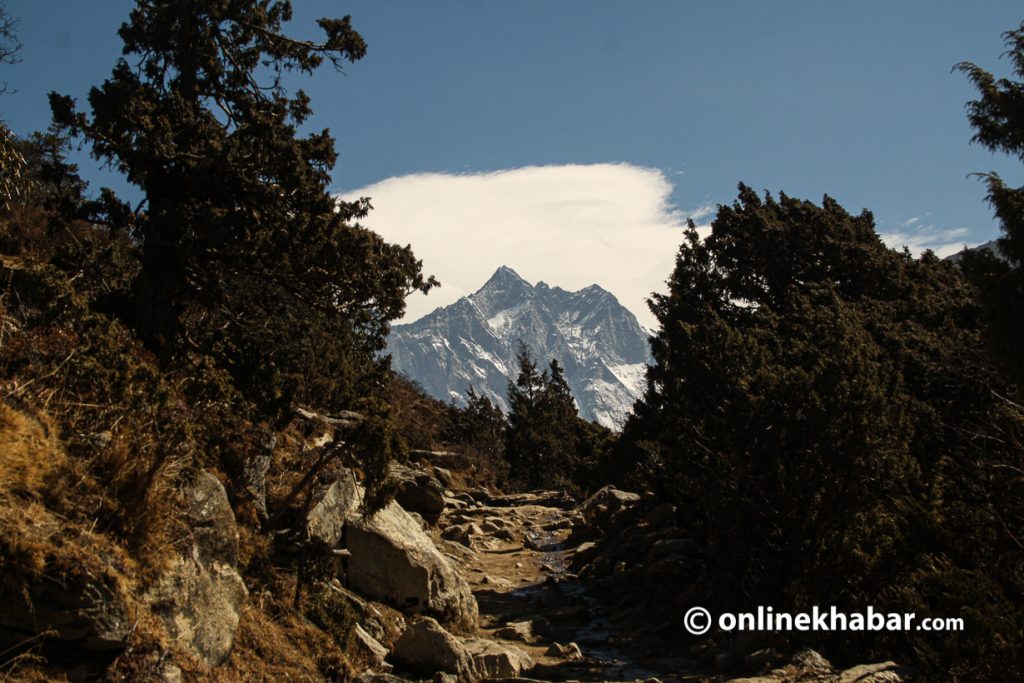
After Namche, the trail gets better as it goes up and down the hill through jungles high into the mountains around Pangboche. There is a different route you can take to Pangboche. Even though both are great, the one via Phortse is raw and not as crowded. It gives you a chance to walk alone with Tengboche to your right and Ama Dablam straight ahead.
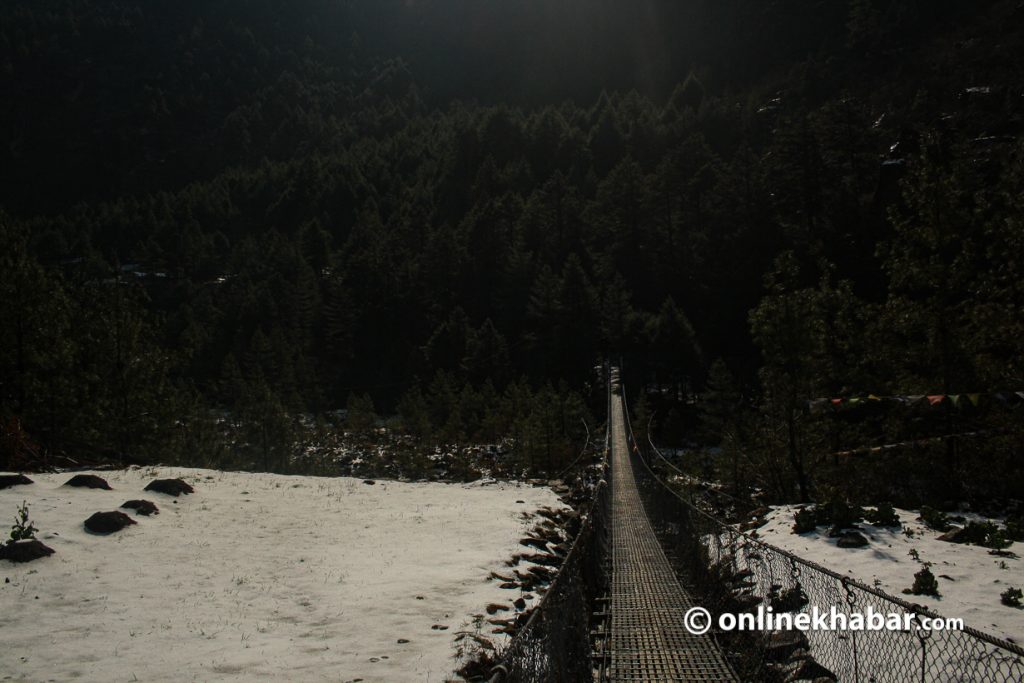
The trail after Pangboche goes up a few hills into rocky and sandy terrain. As the trail gets higher, the terrain gets dryer and more rocky. The last stretch from Gorak Shep to basecamp is extremely sandy and rocky. People are even hinting that a few thousand years ago, all of these were sandy beaches.

The view
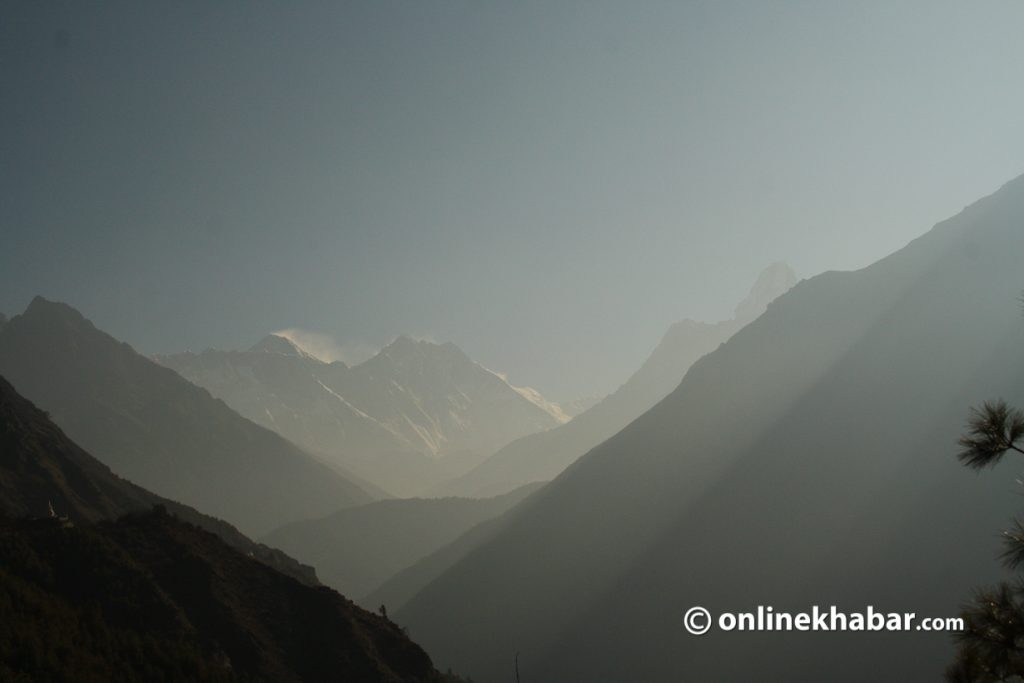
Don’t think anyone can complain about the view. It starts off nice and green around Lukla to Namche, then becomes quite spectacular as you get higher up. The Himalayas are, quite simply, splendid. Every day as you go higher, the view changes and that makes this trek interesting. Small shrubs replace trees and you walk past meadow after meadow on the base of huge mountains.
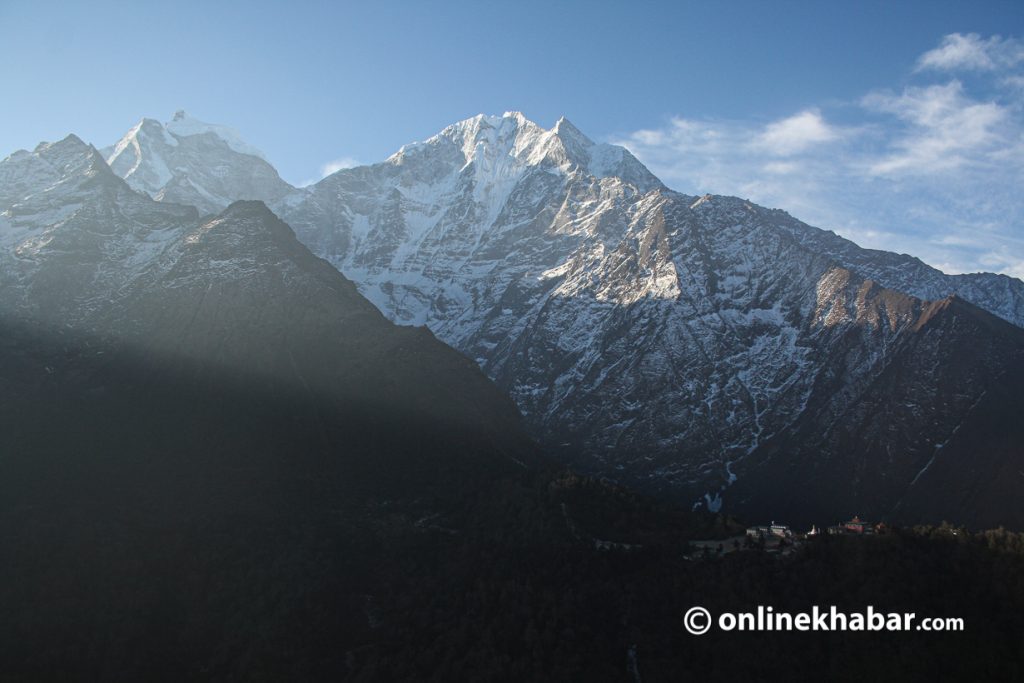
One day, you are walking around green hills with Mount Khumbila behind you and you see icy rivers on the valley floors. The next day you see jagged cliffs towering in the background against a backdrop of crystalline skies. The higher you go, the better view you get, so prepare your legs to climb as high as you can.

People
The trail takes you through numerous villages and people with bright smiles even porters carrying up to 40 kgs on their back. Having had a tough year, these people are still smiling at everyone coming to the region. Most people who live here are from the indigenous Sherpa community, but people from other communities are also seen sporadically as they have been tasked with running the lodges around the area. While during the season, Nepalis are generally disregarded. This year, however, everyone is welcomed with open arms–apparently because the number of foreign tourists has decreased.
Tea houses
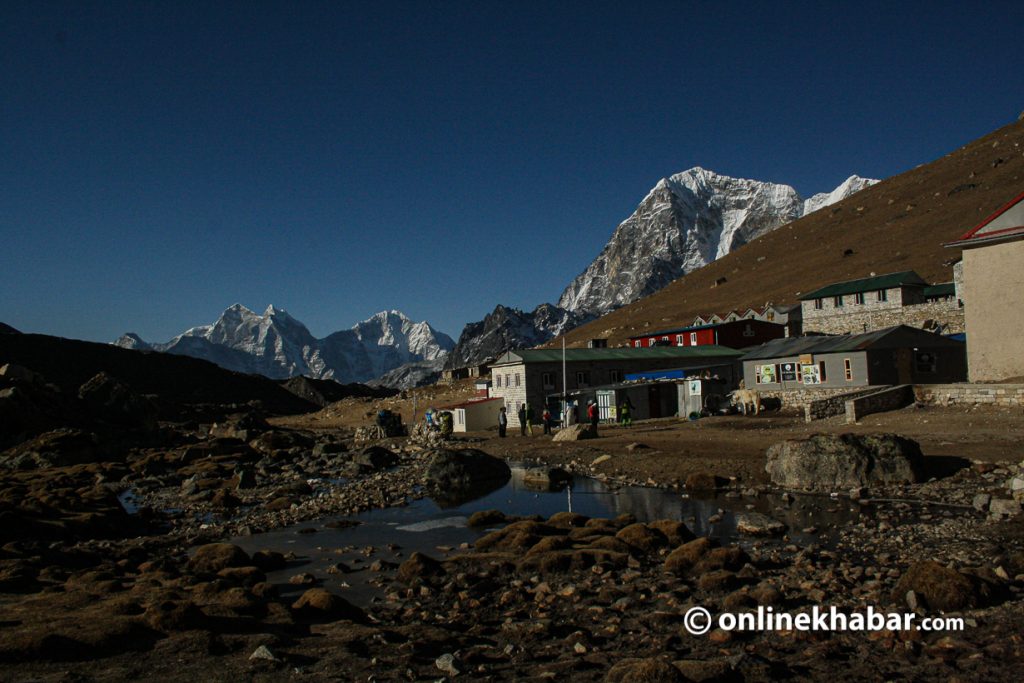
The tea houses in the Khumbu region are the best in Nepal. There is no doubt about this. The dining is warm as are the rooms. Locals say most of them have been improved in the past decade while a lot had been constructed in the past year for the Visit Nepal 2020 campaign.
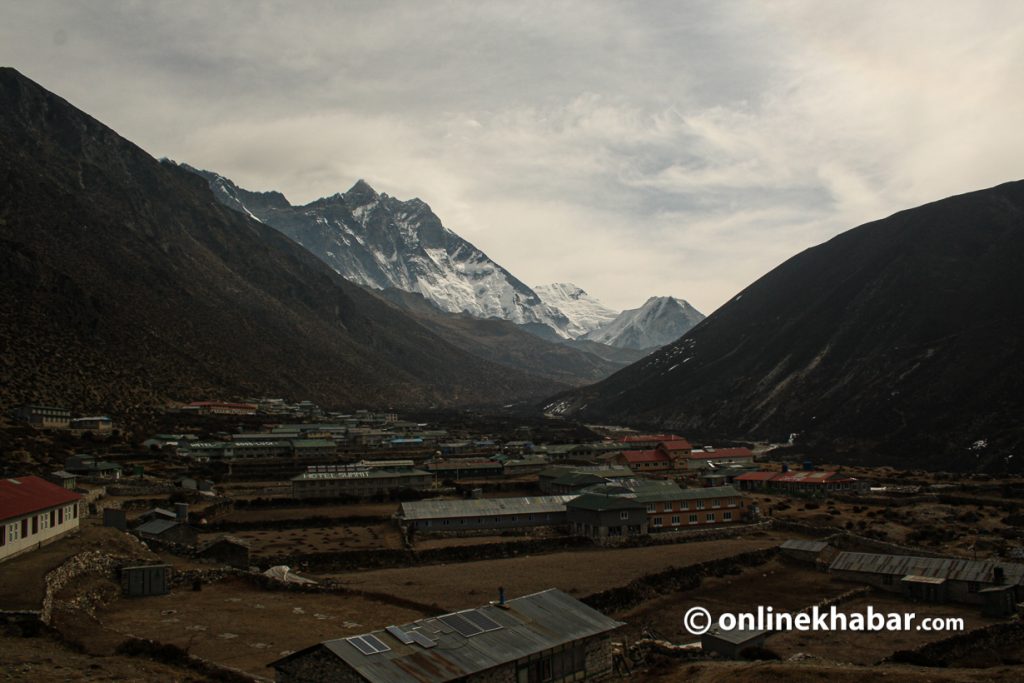
Showers are available up to Dingboche while I am sure there are arrangements in Lobuche as well. People are also being offered electric blankets at Gorak Shep which goes to show how this area has evolved in the past two decades when people had to pitch tents in most of the trekking route. The rates of rooms vary from one place to another but are not free. The locals get agitated when you ask for free rooms, so please refrain from doing so.
Food
The range of food on the trail is surprising. The menu shocked me. From Nepali specials to the continentals, you get it all. But, the staple is always dal-bhat although its taste as you go higher up gets worse and worse. A lodge owner specifically tells me not to order dal-bhat as they do not know how to make a good one. So, Tibetan stew and thukpa is the way forward if you want a full stomach. Tuna sandwich and pizza are also quite good. Try avoiding meat as most of it is not fresh.
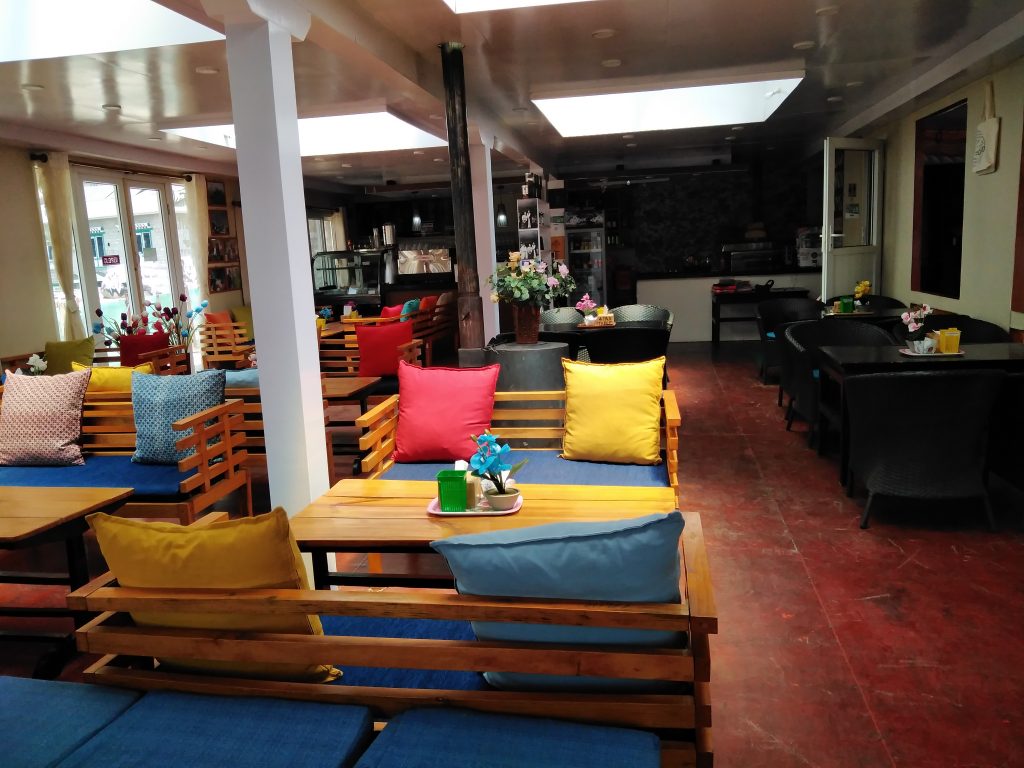
Cafe 4410 at Dingboche is a must-visit where you can try a range of burgers and sandwiches along with its roasted coffee. The cafe is too nice not to go to. Lastly, ask for Seabuckthorn juice or jam where you stay. These local berries taste like apricots and are quite nice to taste.
The best views come after the highest climbs
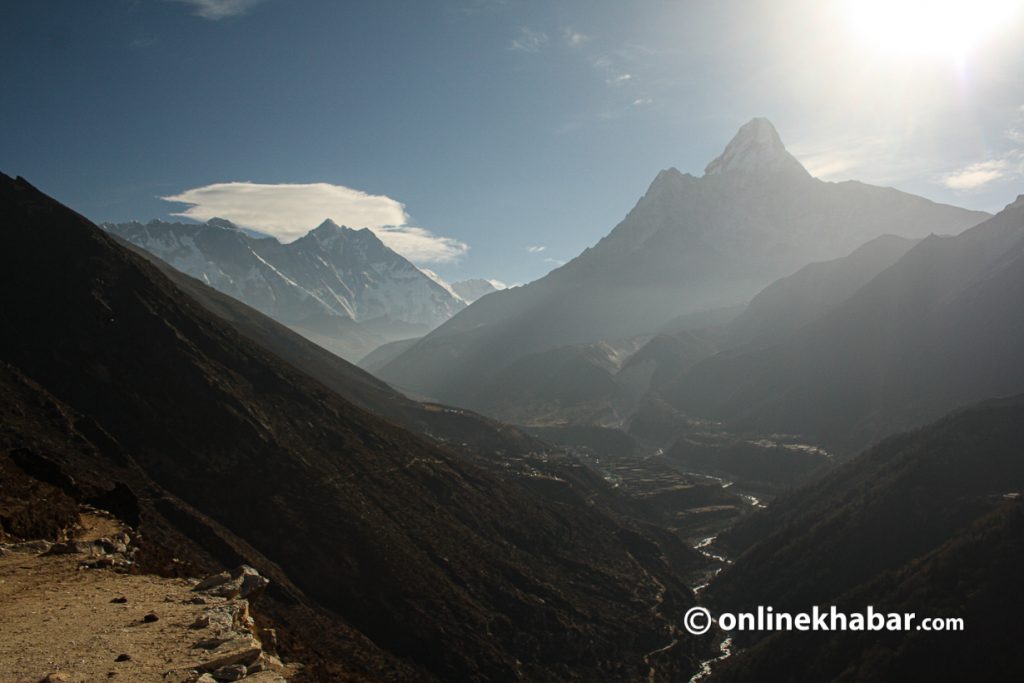
The scenery changes for the better as I climb up. From Pangboche, the trees are gone. With it always windy, the mountains are quite clear. Ama Dablam from then on looks majestic.
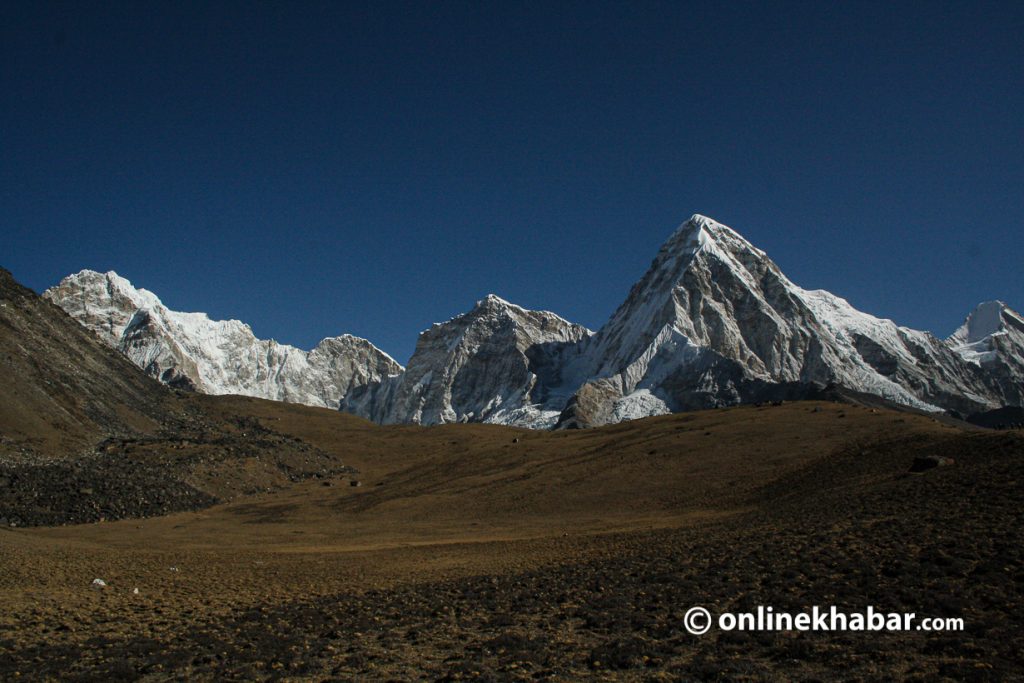
As I get nearer, the mountain keeps changing its shape. Standing above Nangkarthung, a hill above Dingboche during the acclimatisation day, I can see Kangtega, Ama Dablam, Nuptse, Lhotse, Makalu, Cho Oyu and Taboche from the top. It is quite a scenery which proves an age-old saying, the higher you go, the better the views get.
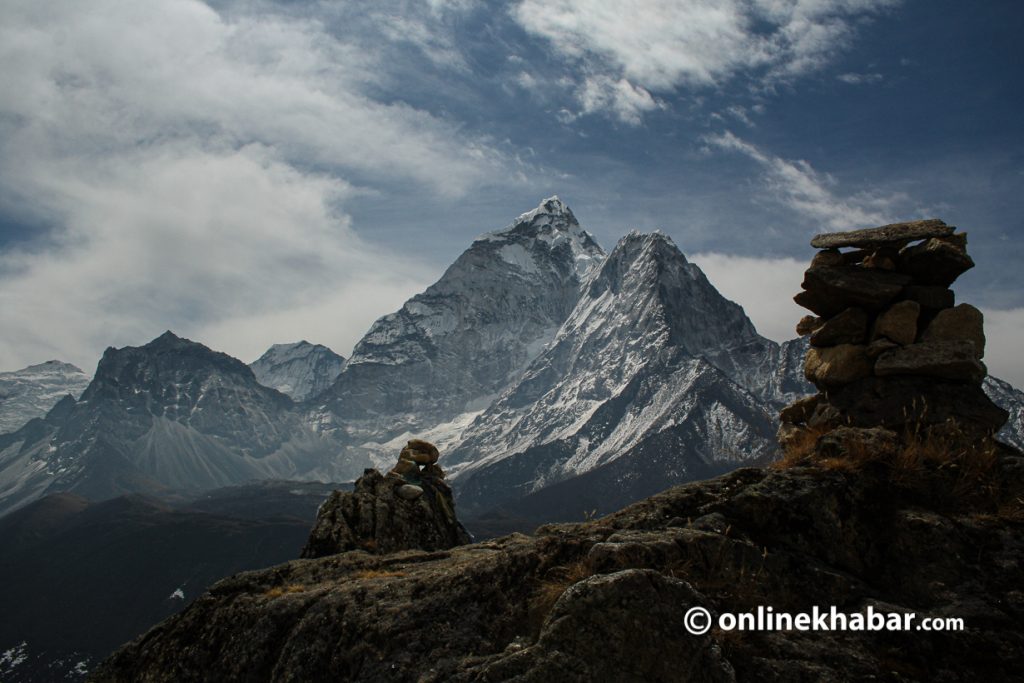
Cold and windy
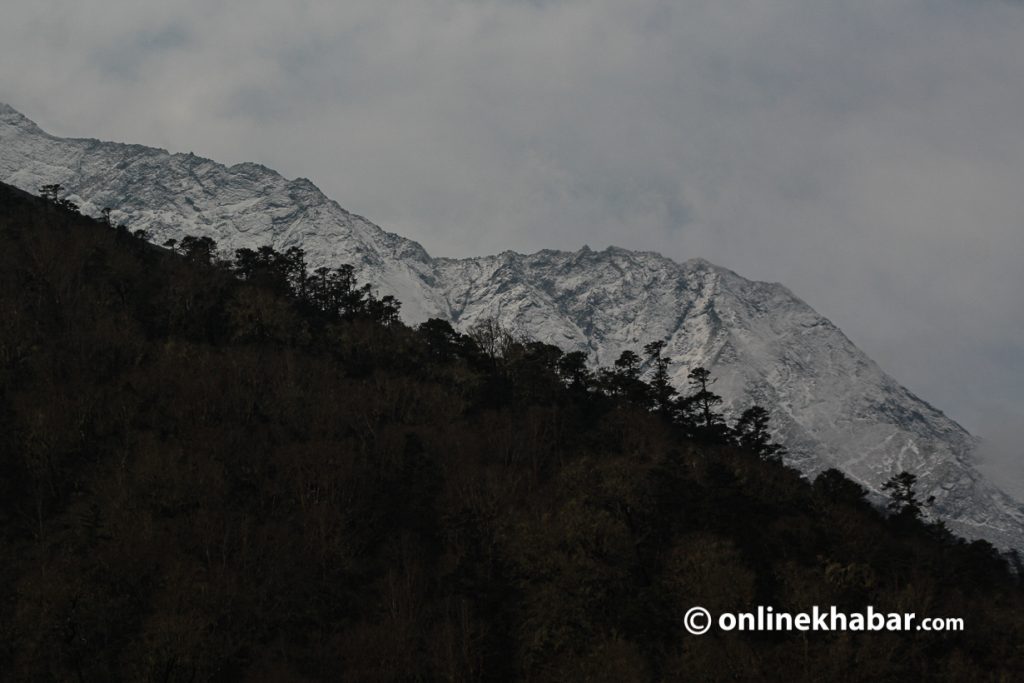
The temperature during the night changes dramatically. The only way one can escape it is by laying yourself up and using down jackets. The rooms have no heating but have warm blankets. The wind, above 3000 metres, gets quite frosty. The wind speeds increase significantly in the afternoons. Above 4,000 metres, the still water freezes, which makes going to the toilet at night quite tough. Above 5,000 metres, the winds pick up even more. It is mostly on your back while you are going up the trek pushing you on while coming back, you get the wind straight on your face. It is uncomfortable, but worth it for the views.
Acute mountain sickness (AMS)
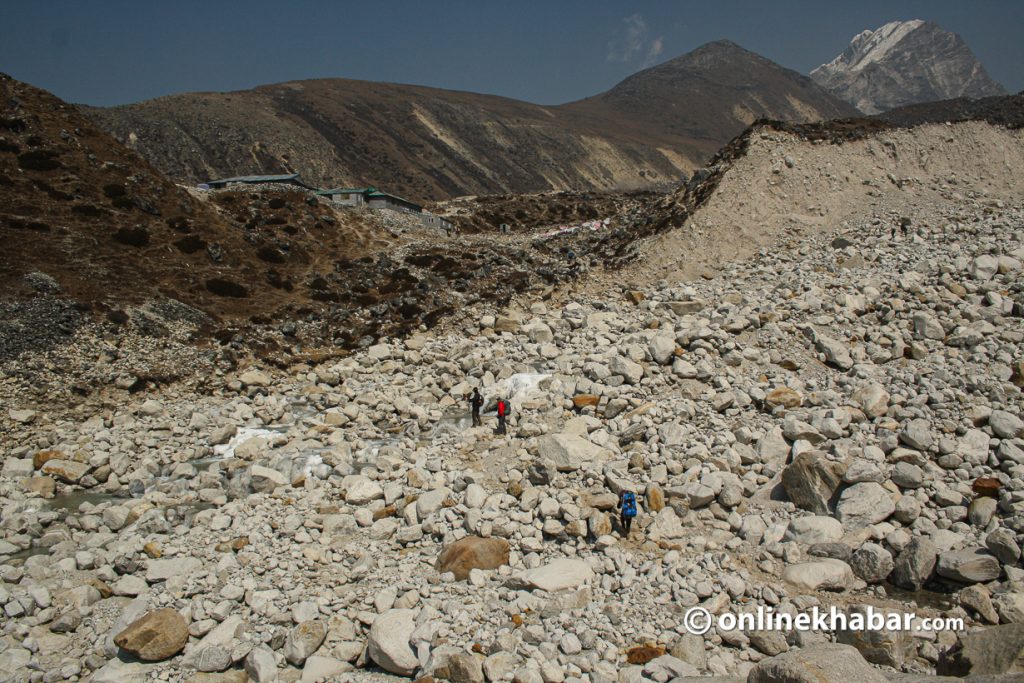
I had no signs of the AMS but saw a lot of people, mostly foreigners, suffer from high altitude. The first person I saw was at Pangboche. The guy was being put on a horse to be taken to Namche and below. He looked pale and had nausea. The other was a Nepali lady at Dingboche who said she could not breathe properly. She managed to complete the trip but had to use a horse to do so. Beyond Lobuche, a lot of people were struggling. People who had not acclimatised two days at Namche Bazar and Dingboche were suffering the most. A couple from Lithuania had to take a helicopter back to Namche from Gorak Shep due to altitude sickness.
That is why, if you are from a lower altitude, it is better to take altitude medicines before you leave for the trek. Mind you, if you take medicines, make sure to have plenty of water.
Helicopters
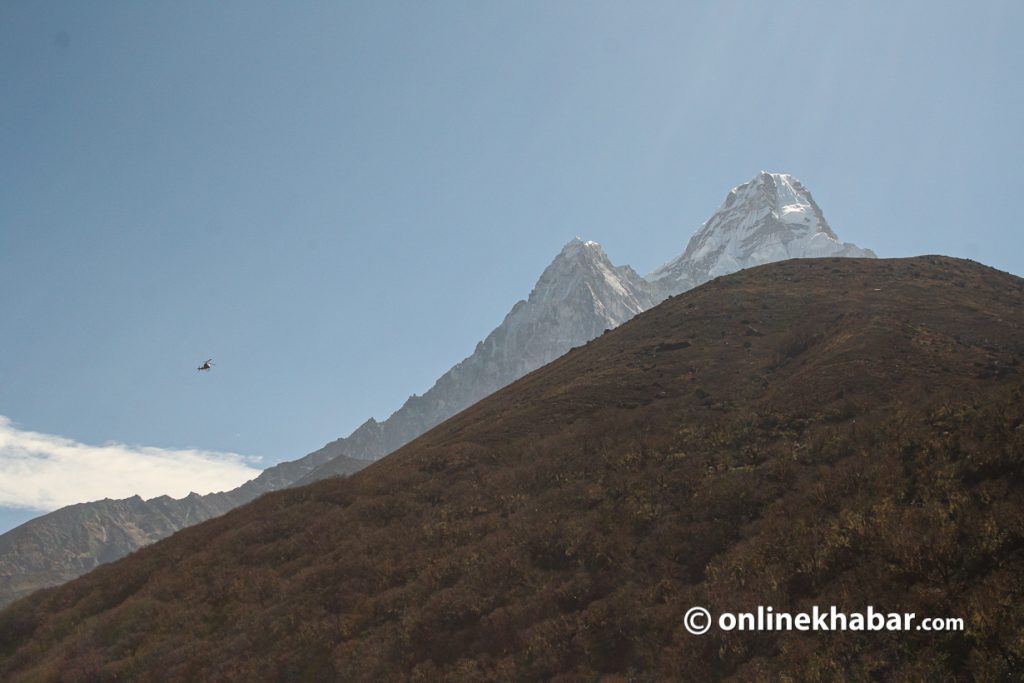
They are everywhere. At Lukla, at Phakding, at Namche, at Pheriche, you name a place, they send a helicopter. They transport both people and goods and do so from 6 am to 6 pm. There are days you see them more than you see birds. As long as it has helped locals, for a trekker, the noise of these helicopters is annoying. If it is for rescue understandable, but mostly, it is for the convenience of people who own helicopter companies it seems.
Best place
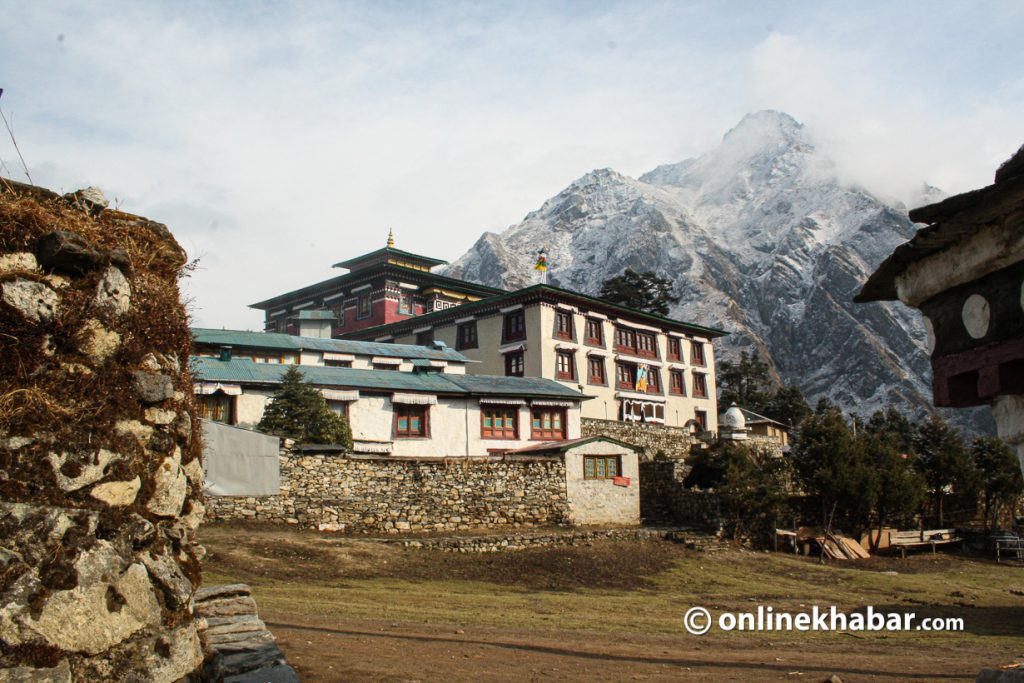
Dingboche has to be one of the best places in the area. Surrounded by mountains on all sides, the village in the valley is warmer than others around and is quite scenic. Ama Dablam looks spectacular from almost all parts of the village as does Taboche. Far away, you see Island Peak and other mountains which will make you want to stay there for days. As you spend two days here, there are a lot of short hikes you can take which includes going halfway to Ama Dablam base camp.

Lobuche is also quite nice as you get a close view of the Khumbu glacier. But, the best place on the trek has to be Tengboche. The small village on top of the hill is a little paradise from where you get to see a panoramic view of Everest, Ama Dablam among many other mountains. It houses a 15th-century monastery which is the leading Buddhist centre in the Khumbu region with a residing Rinpoche who blesses pilgrims, mountaineers and travellers passing through. A trek up to his little paradise is completely worth it.

Overrated Namche
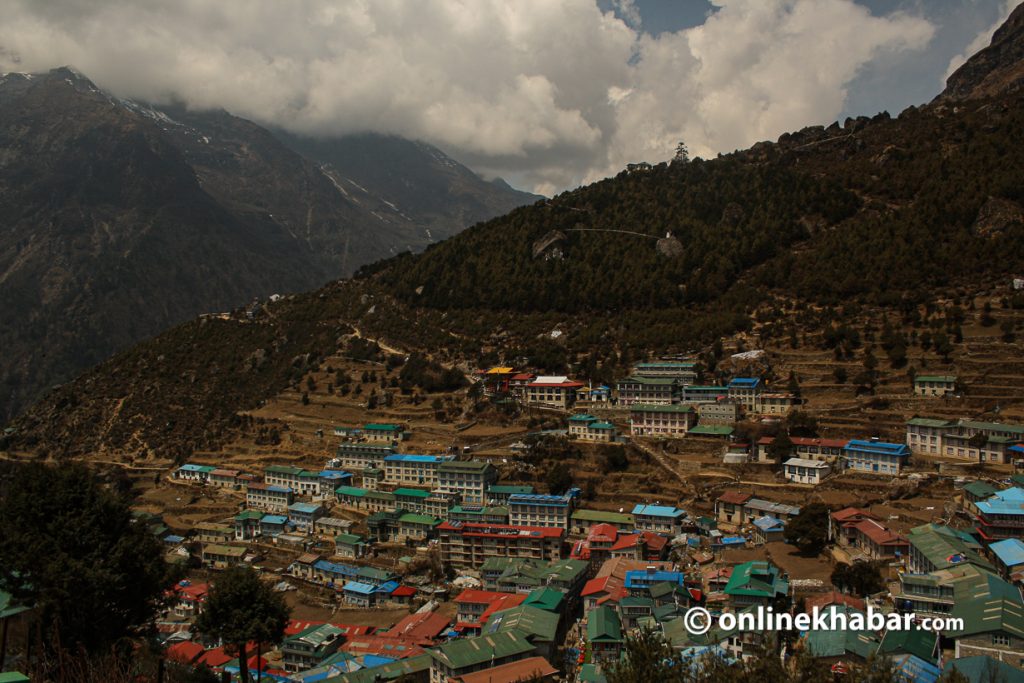
Namche has to be the most overrated place in the region. It is a party place. It is busy, full of loges and shops. Even though people are recommended to stay two nights here, there is basically nothing to do besides drinking and hiking up to Syangboche and Khumjung. The view of Kongde Peak is quite nice though, but apart from that, there is nothing Namche offers. It is not an authentic Sherpa village. It is a trap to loot money from foreigners. The alternative to this is to hike up Khunde which is a better place if you like solitude.
The base camp
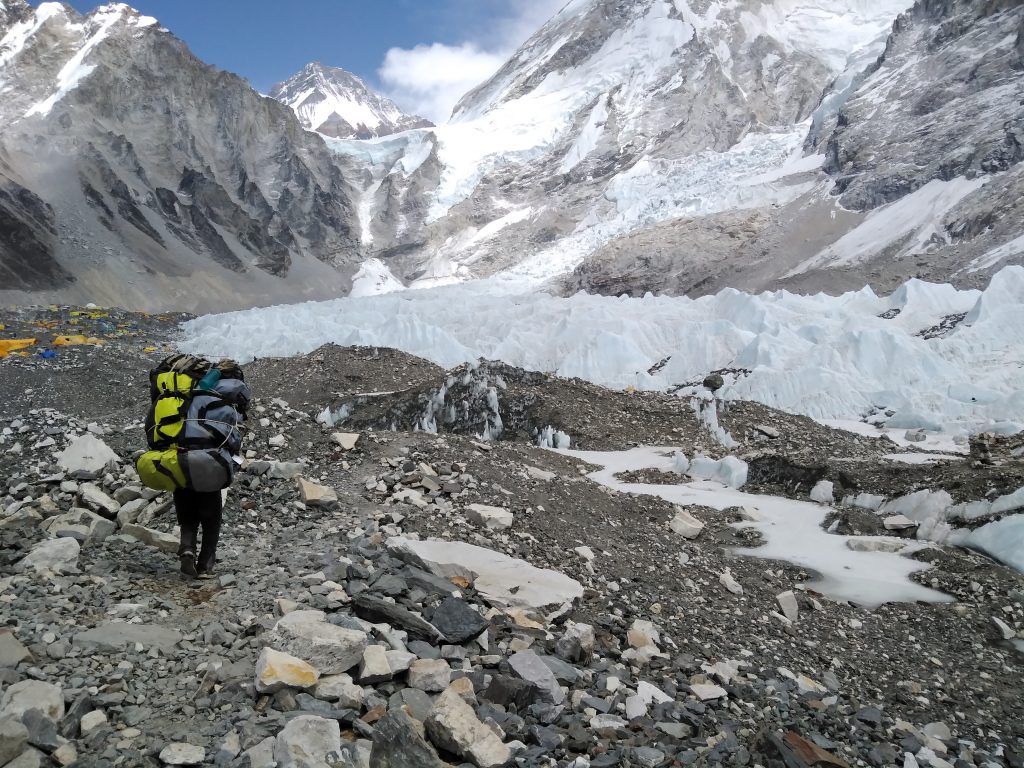
The camp is busy. Expedition agencies are busy making the base camp ready for their clients. It looks packed from a distance and as I near it, it is still busy. Tents have been pitched everywhere.
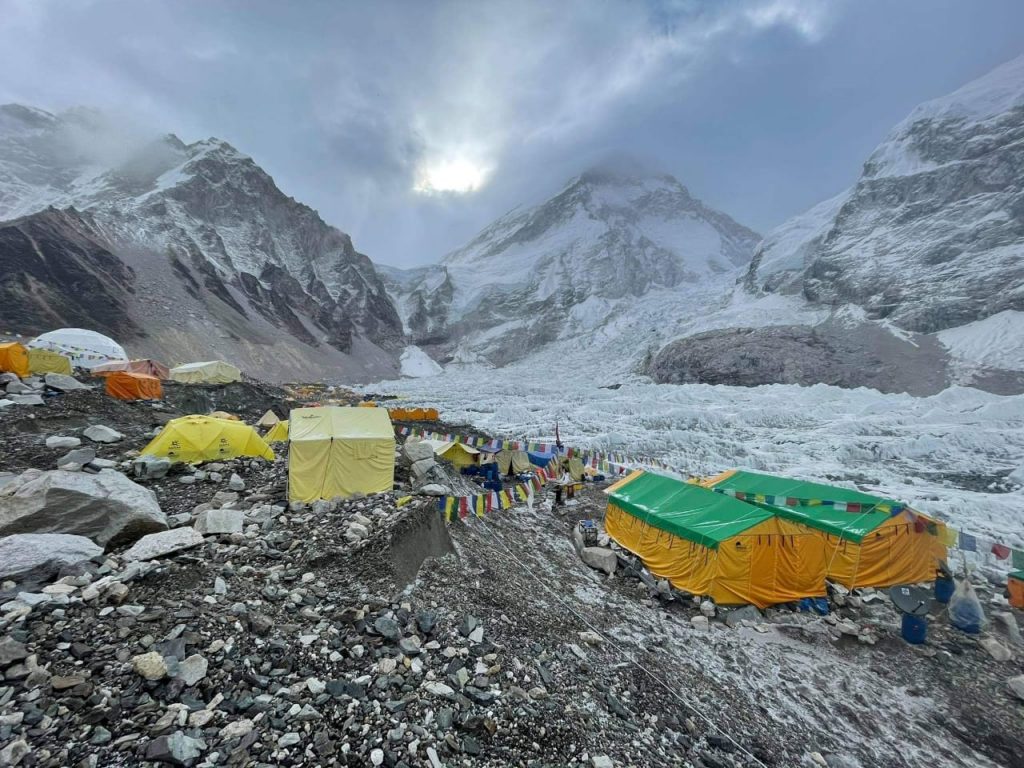
The support staff are busy flattening out a part of the glaciers to ensure that they could pitch the tent in an easy manner. Tumbling and tripping on rocks, I navigate the area as if I belong there. But I do not. People are not allowed in for a long time, and realising that, I wish those I know the best of luck and return to Gorak Shep.
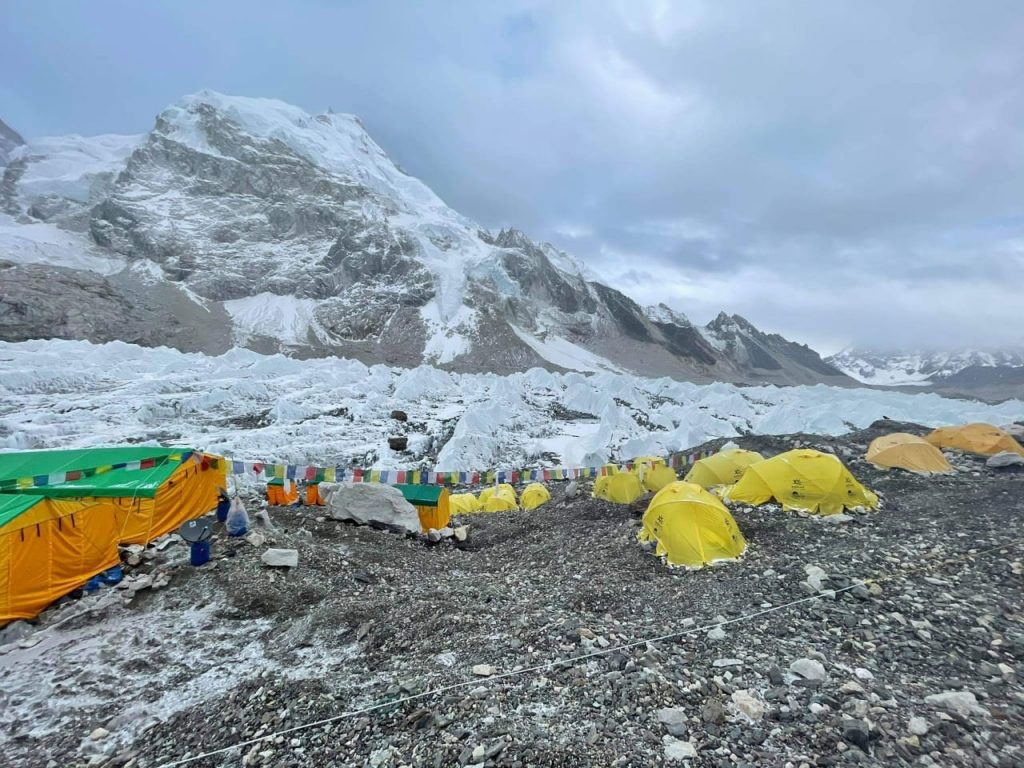
Milestone
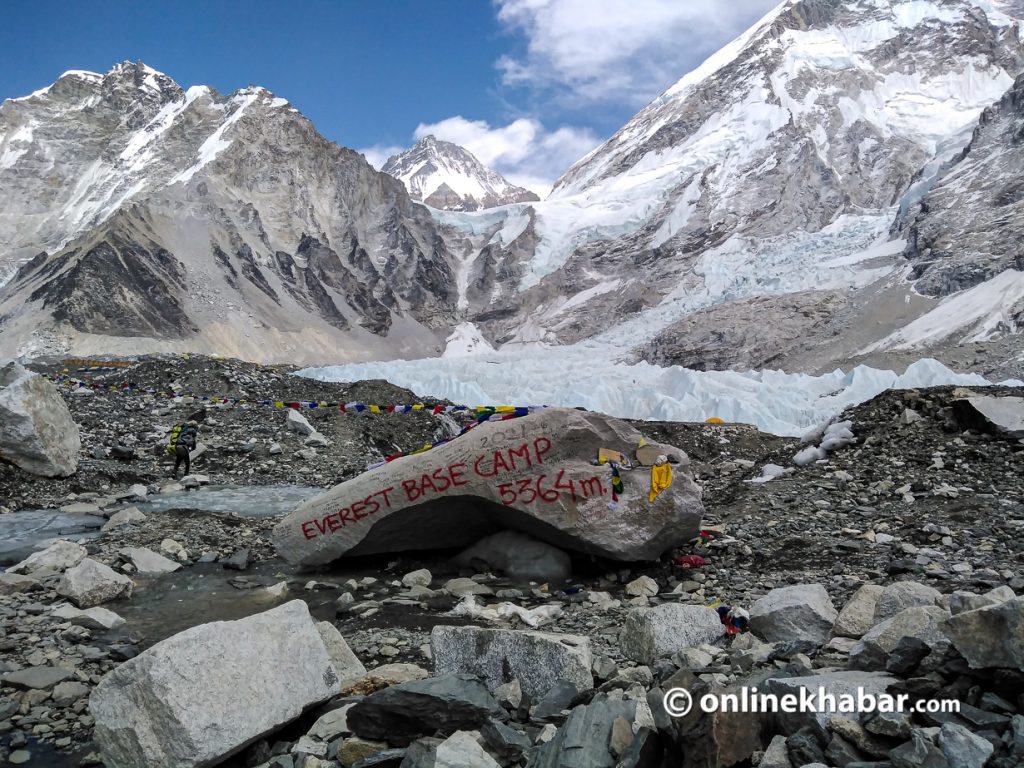
The stone that marks the base camp changes its place every year. Like every other year, there are a lot of people heading to the stone from Gorak Shep. It is a two-hour walk through rocky terrain which also changes every year, say locals. But surrounded by mountains, you feel that you are somewhere else. In a place far far away. Up in the mountains just below Nuptse to my right and Pumori to my left. Definitely, a place to get to one in a lifetime.
Everest
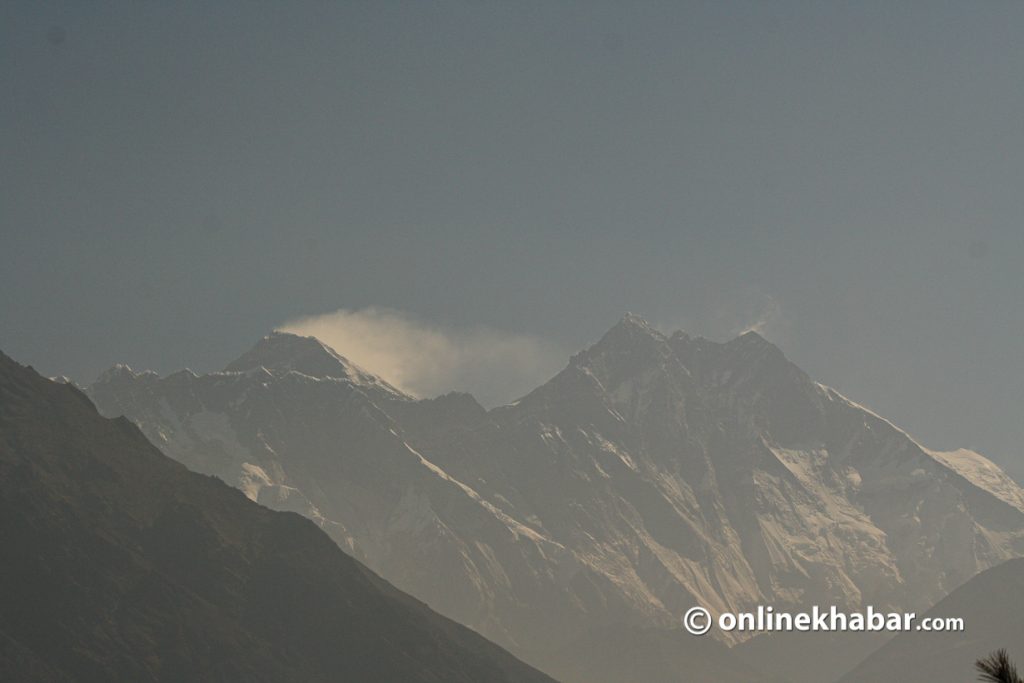
If you do not know that you do not see Everest from Everest base camp, you need to do more research. The first view you get is from Toph Dada as you approach Namche. The second is from Everest View Hotel above Namche. Then on, you get to see glimpses of it on the way to Tengboche and from Tengboche itself. But, you do not go on this trek just for Everest, you take on the trek for more. There are other great mountains around, which are better than Everest and will be in your memory for years to come.
The hardest climb
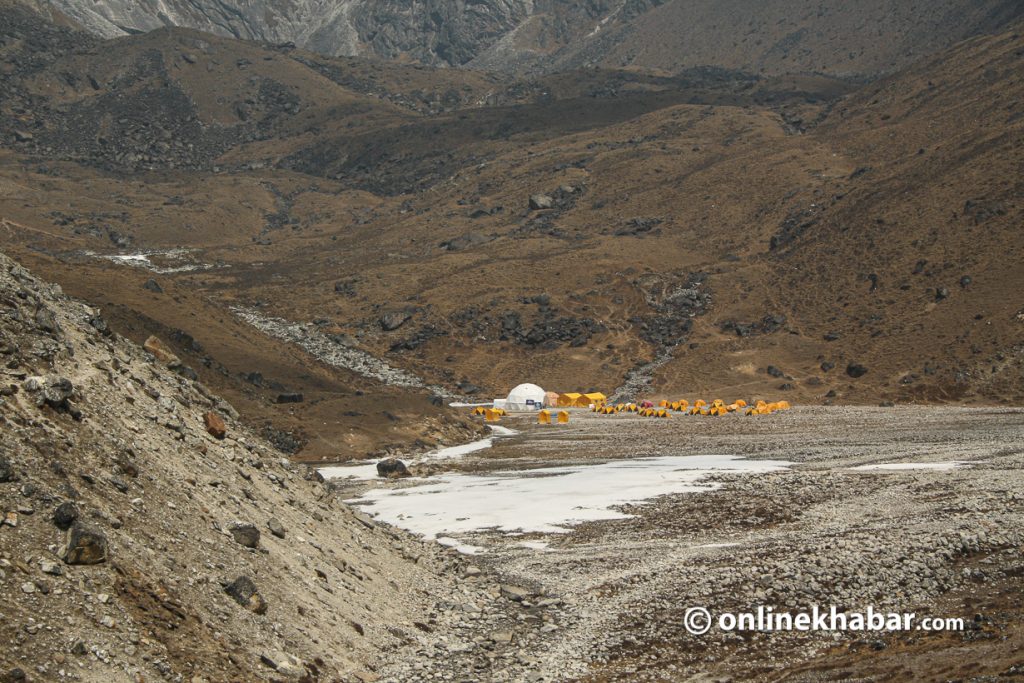
Many call the Namche uphill the hardest on the trail, but I think that uphill is a bit overrated. It is mostly straightforward and quite a long climb. But, that hardest has to be the uphill that takes you from Thukla to Lobuche passing the mountain’s base camp in the process. It does not look much, but the uphill which takes you over 5,000 metres is gruelling and takes a lot out of you. It is only roughly an hour’s climb, but make no mistake, a lot of people give up here. No wonder they call it the Thukla Pass. It is not as easy as people think it is, but with small steps, you get there. Once at the top, you see hundreds of chhortens (small temple-like structures) made in the name of climbers who perished on Everest: from Babu Chhiri Sherpa to Scott Fisher, everyone is there reminding you of the consequences.
Oxygen (and lack of it)
After Thukla, the air gets thinner. Sleeping in Lobuche and Gorak Shep is hard. I was fine at Lobuche, but in Gorak Shep I hardly slept. The lack of oxygen in the room woke me up consistently. It is a reminder that you are high up in the mountains where you do n’o necessarily belong.
Covid-19
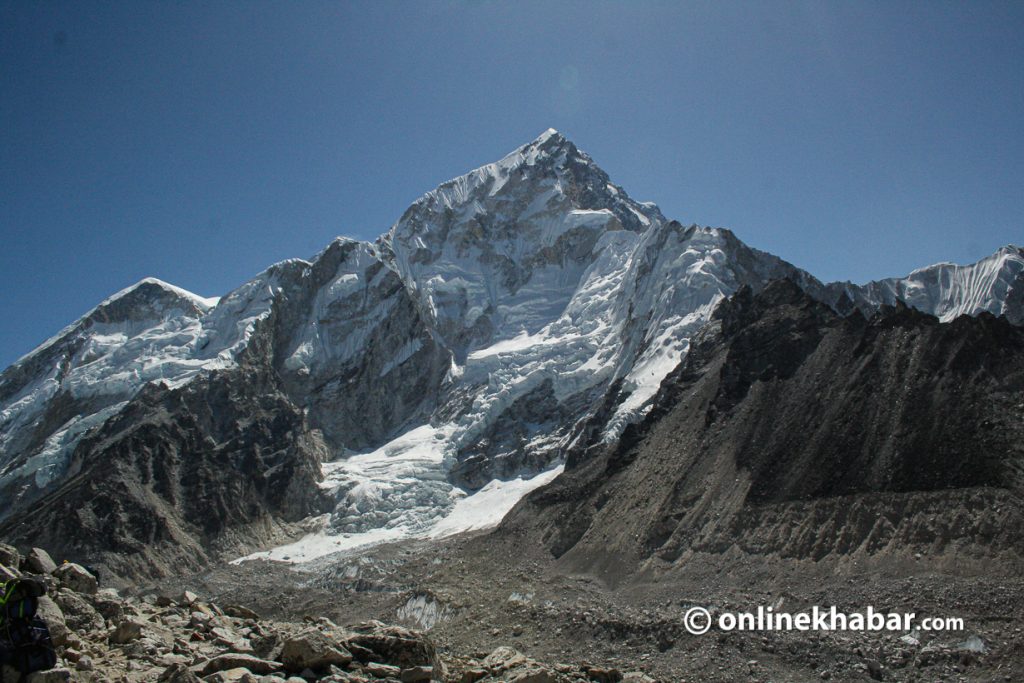
It is time to address the elephant in the room. How safe is it, many might ask. Well, it was safe until the first week of April. People were doing fine. There were sanitisers in most lodges, but the use of masks was limited to only a few people. But given there were only a few 100 people on the trail, it felt particularly safe. But people at the base camp were worried. Shaking hands was not common.
Dropping down

Returning to Lukla is a sad feeling. As much as I love staying high up, I know that bad weather is incoming and I have to go back.
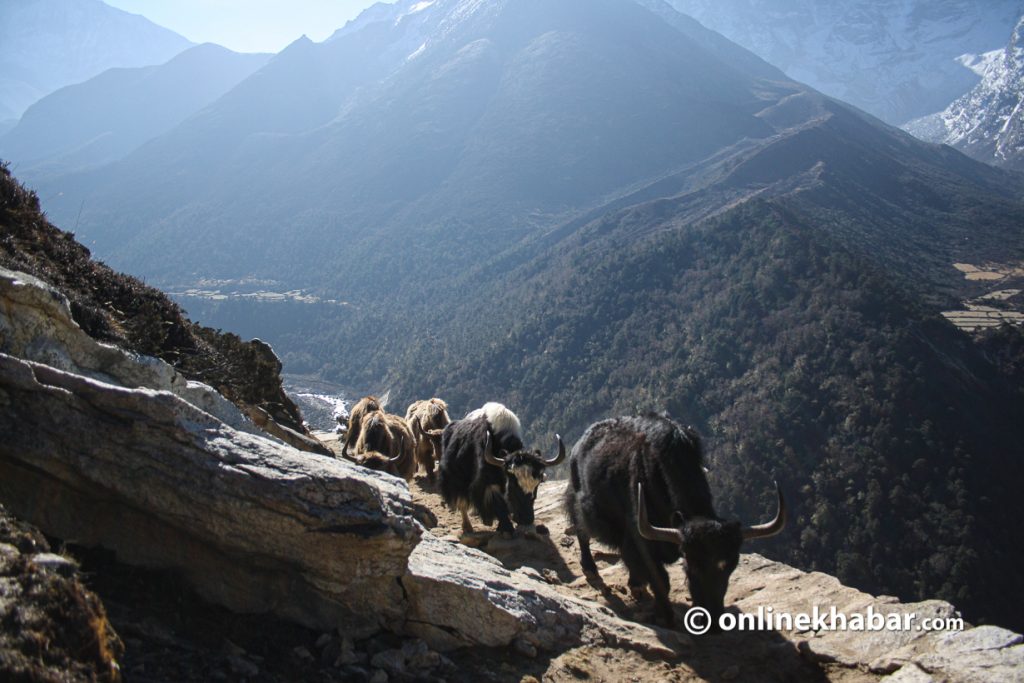
I walked 21 kilometres to Tengboche from Gorak Shep and I am glad I did as Tengboche the next morning was covered in snow. I did not see Everest from there, but I did not need to. It is not always about the high mountains, it is about experiencing something new every time. I could see the trail I took from Phortse to Pangboche covered in snow. I could see Ama Dablam playing hide and seek behind dark clouds. I was done with my trek and I loved every bit of it.
Flight
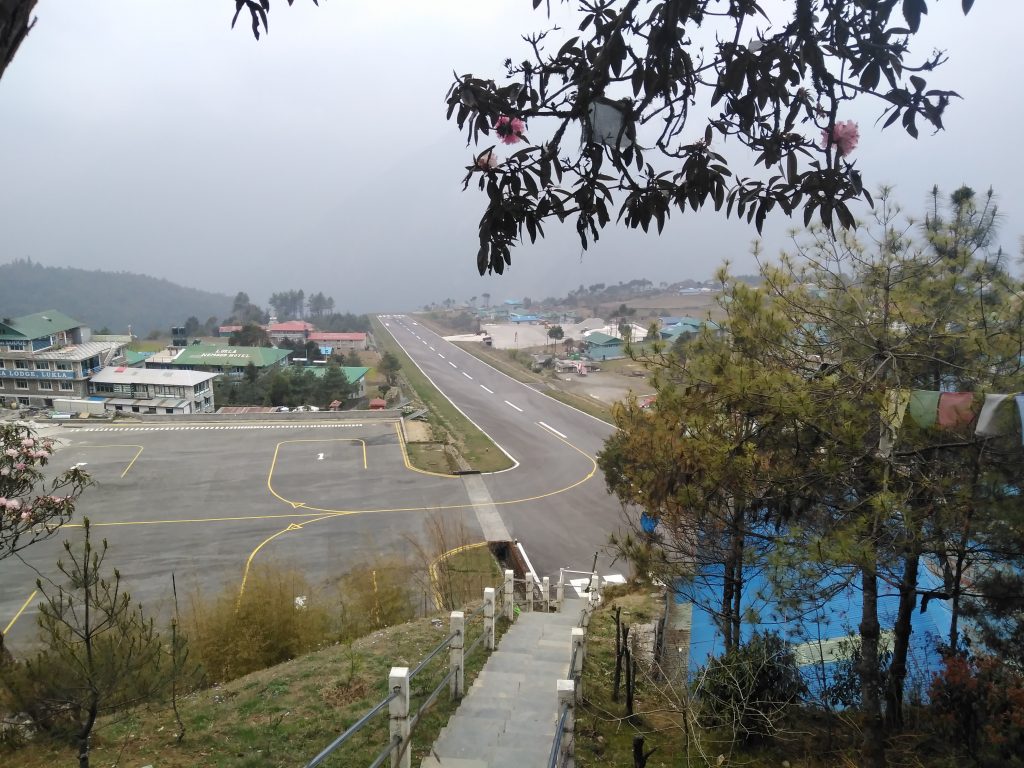
Lukla is a nice place if you get to spend a bit more time there, far better than Namche. The airport is daunting but safe. The flight is, well, nerve-wracking to say the least. Tara Air needs new aircraft because the ones it has now are definitely too old. A foreigner compared the aircraft to one of Kathmandu’s local buses. But, like the local buses, the aircraft does its job. Smoothly with little turbulence, it helps me get to where I have always wanted to go.
All photos by the writer.



